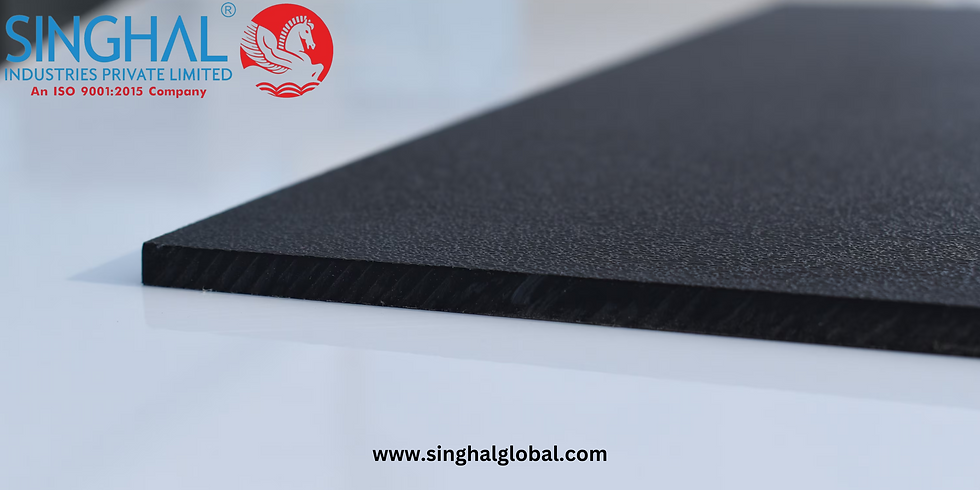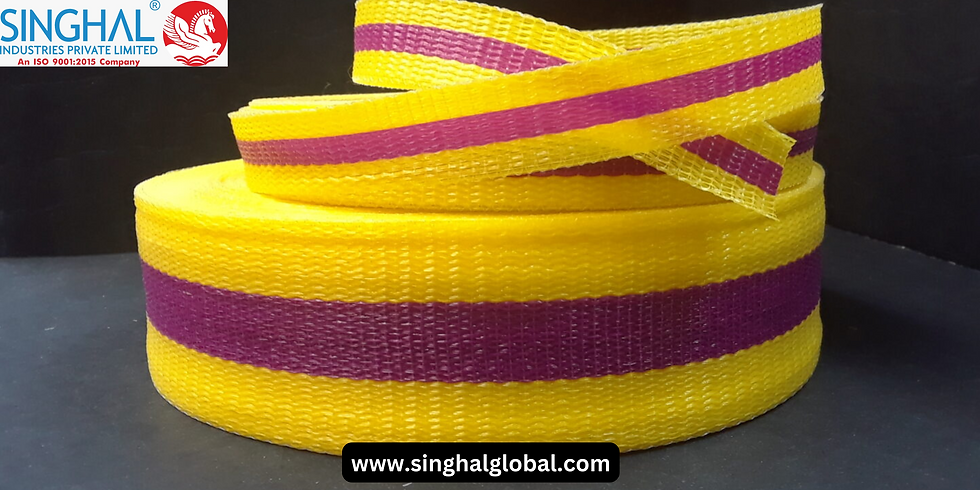Eco-Friendly Innovation: The Promise of Biodegradable Plastic Bags
- singhalglobal group

- Jun 29, 2023
- 4 min read
Introduction
In today's world, where environmental concerns are at the forefront, the demand for eco-friendly innovations is increasing rapidly. One area that has seen significant progress is the development of biodegradable plastic bags.
These bags offer a promising solution to the environmental issues associated with traditional plastic bags. In this article, we will explore the concept of eco-friendly innovation through biodegradable plastic bags and delve into their benefits, production process, and challenges. Let's embark on this journey towards a greener future!

The Need for Eco-Friendly Solutions
The Environmental Impact of Plastic Bags Plastic bags have long been a major contributor to environmental pollution. They take hundreds of years to decompose, filling landfills and oceans, posing a significant threat to marine life.
Additionally, the production of plastic bags involves the consumption of fossil fuels and the emission of greenhouse gases, contributing to climate change. It is evident that a sustainable alternative is urgently required.
Eco-Friendly Innovation: Biodegradable Plastic Bags
Biodegradable plastic bag offer a viable solution to the environmental problems caused by traditional plastic bags. These bags are designed to break down naturally and decompose into harmless substances under specific conditions, reducing their impact on the environment.
The development of biodegradable plastic bags is a significant step forward in achieving sustainability goals and promoting a greener future.
The Benefits of Biodegradable Plastic Bags
Biodegradable plastic bags offer several advantages over traditional plastic bags. Let's explore some of the key benefits:

Reduced Environmental Impact: Biodegradable plastic bags break down into natural elements, minimizing their impact on ecosystems. This ensures that they do not linger in landfills or oceans for centuries, causing harm to wildlife and the environment.
Renewable Resources: Many biodegradable plastic bags are made from renewable resources such as plant-based materials. This reduces the reliance on fossil fuels and supports sustainable agricultural practices.
Energy Savings: The production of biodegradable plastic bags requires less energy compared to traditional plastic bags. This results in reduced carbon emissions and a smaller carbon footprint.
Versatility: Biodegradable plastic bags can be manufactured to have various properties, making them suitable for a wide range of applications. They can be customized to be durable, waterproof, or transparent, depending on the specific requirements.
The Production Process of Biodegradable Plastic Bags
The production of biodegradable plastic bags involves several stages. Let's take a closer look at the typical manufacturing process:

Raw Material Selection: Biodegradable plastic bags are often made from materials such as polylactic acid (PLA) or polyhydroxyalkanoates (PHA), derived from renewable sources like corn or sugarcane. These materials are chosen for their biodegradability and eco-friendly properties.
Extrusion: The selected raw material is melted and extruded into thin plastic film. This film will later be used to create the bags.
Bag Formation: The extruded film is then cut and sealed to form individual bags. Various techniques such as heat sealing or ultrasonic sealing can be employed during this process.
Printing and Customization: Biodegradable plastic bags can be printed with logos, designs, or labels according to specific requirements. This allows businesses to brand their bags while promoting their commitment to sustainability.
Packaging and Distribution: The finished biodegradable plastic bags are packaged and distributed to retailers or consumers. Proper labeling and information regarding the bags' biodegradability may be included to educate users and ensure proper disposal.
Overcoming Challenges and Ensuring Success
While biodegradable plastic bags offer immense potential, there are still challenges to be addressed to ensure their successful adoption and impact on the environment. Some key challenges include:
Cost: Biodegradable plastic bags can be more expensive to produce than traditional plastic bags due to the higher costs of raw materials and manufacturing processes. Widespread adoption and technological advancements can help reduce production costs over time.
Infrastructure and Waste Management: The proper disposal and management of biodegradable plastic bags are crucial for their effective decomposition. Adequate waste management systems need to be in place, including composting facilities or industrial composting processes that facilitate their breakdown.
Consumer Education: Raising awareness among consumers about the benefits and proper use of biodegradable plastic bags is essential. Educating the public on the importance of responsible disposal can ensure that these bags fulfill their intended purpose of reducing environmental harm.
FAQs about Biodegradable Plastic Bags
Q: Are biodegradable plastic bags better for the environment than traditional plastic bags?
A: Yes, biodegradable plastic bags are a more environmentally friendly option compared to traditional plastic bags. They are designed to break down naturally and reduce their impact on ecosystems.
Q: Can biodegradable plastic bags be recycled?
A: While some biodegradable plastic bags can be recycled, it is important to check with local recycling facilities to ensure proper disposal. Mixing biodegradable and traditional plastic bags in recycling can contaminate the recycling process.
Q: How long does it take for biodegradable plastic bags to decompose?
A: The decomposition time of biodegradable plastic bags can vary depending on the specific materials used and the environmental conditions. Some bags can decompose within a few months to a few years.
Q: Are biodegradable plastic bags as durable as traditional plastic bags?
A: Biodegradable plastic bags can be designed to have similar durability and strength as traditional plastic bags. However, the exact durability may vary depending on the specific materials and manufacturing processes.
Q: Can biodegradable plastic bags be used for food packaging?
A: Yes, biodegradable plastic bags can be used for food packaging. They can be manufactured to meet food safety regulations and maintain the freshness of the packaged products.
Q: How can I dispose of biodegradable plastic bags?
A: To ensure proper decomposition, biodegradable plastic bags should be disposed of in designated composting facilities or industrial composting processes. Avoid disposing of them in regular trash bins or recycling containers.
Conclusion
In conclusion, biodegradable plastic bags offer a promising solution to the environmental challenges posed by traditional plastic bags. With their reduced environmental impact, use of renewable resources, and versatility, these bags contribute to a greener and more sustainable future.
However, overcoming challenges related to cost, infrastructure, waste management, and consumer education is crucial for their successful adoption. By embracing eco-friendly innovations like biodegradable plastic bags, we can pave the way towards a cleaner and healthier planet for generations to come.
to know more details visit us : -



Comments